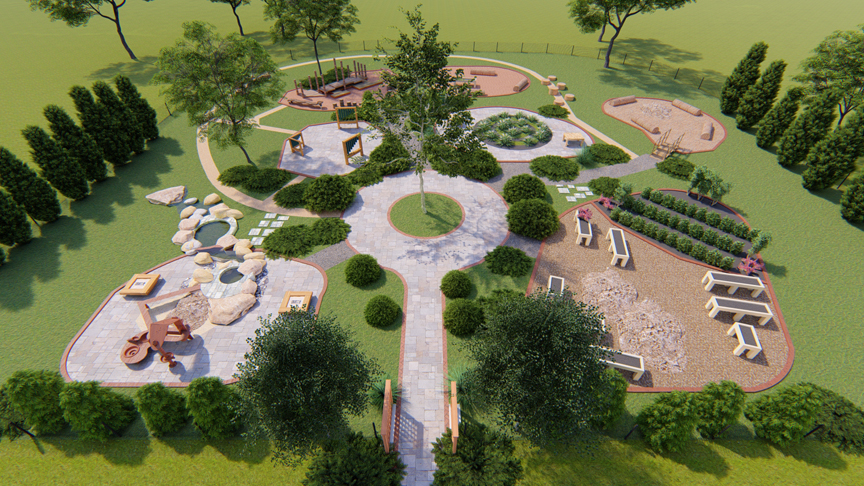With Spring around the corner, we have fresh air and time outside on our mind. Getting outside, away from smart screens and Chromebooks, allows students and teachers alike to connect with each other and their surroundings in a way that their traditional classroom may not allow. It is well documented in numerous studies that spending time outdoors reduces stress, improves mood, restores depleted attention, and even boosts immune systems. Knowing these benefits exist, how can our schools take an active approach to incorporating additional outdoor learning?
Purpose and Benefits
Outdoor learning environments expand possibilities into what learning can look and feel like. With multiple opportunities to create a learning experience, teachers and students alike can benefit. The seasons, natural walkways, native plants and wildlife; are all opportunities to create an active learning experience. This can include informal or structured curriculum moments.
Incorporating outdoor time and learning into regularly scheduled routines expands and enhances the classroom experience. A 2018 study, Do Lessons in Nature Boost Subsequent Classroom Engagement? Refueling Students in Flight[i], clearly illustrates direct correlation between lessons delivered outside with increased and enhanced attention/engagement in students after their time outside. Results showed that when students received outdoor lessons, they were significantly more engaged in their next instructional period on all measures, than if they’d received the same lessons indoors. This held true for different teachers, different students, different times of day, and different times of year.
Kids who are healthier and calmer simply learn better, because they are more open to the experience. Knowing this provides a path toward an embrace of an expanded curriculum and series of learning moments outside the realm of traditional learning.

Design and Execution
Every district has unique features, students, teachers, and school communities. To implement initial ideas to incorporate outside learning into students’ and teachers’ routines, it is important for each school facility to take an inventory of their physical features in order to understand how to best utilize them. Proximity to classrooms, proximity to sports/athletic/physical education fields, shade, and shelter are all considerations for ideal outdoor spaces to either use as a space to learn IN or to use as a space to study and learn FROM. Teachers can adopt a curriculum based on the spaces they have available and vice versa, the spaces they have available can be the subject that is studied. The possibilities in the execution of outdoor learning are endless.
The use of outdoor space can but does not have to mean increased costs. Districts can begin to consider their options with all budgets in mind. Outdoor spaces can be utilized as is. A learning space can be created using large rocks or tree stumps as seats. Learning and connection can happen walking on naturally occurring walkways throughout the property. Conducting a classroom experience on a mere patch of grass outside the building, as the study mentioned above suggests, vastly improved student engagement in their classwork that immediately followed.
Long-term Maintenance and Sustainability
Depending on the space you create or utilize there could be additional maintenance to sustain that space. It can be a battle to convince your facilities maintenance team of the importance of adding this to their to-do lists. If we continue to think of outdoor spaces as an extension of the classroom naturally, be sure to budget and make time for regular upkeep. Consider the feasibility of maintenance when considering these spaces. What is realistic for your district? A natural walkway through the property or a patch of grass may not need any additional maintenance however, the installation of a pavilion, benches, and other structures may, (including potential availability of electricity, technology, etc.). If this is new to your district, take small steps toward the direction of outdoor learning.
With proven benefits of spending more time outside, it is never too early or too late to start planning for your district. Our team of educational planners, architects, and landscape architects are ready to answer your questions and help you take the next steps toward looking at the possibilities right outside your window.
[i] ORIGINAL RESEARCH ARTICLE
Front. Psychol., 04 January 2018 | https://doi.org/10.3389/fpsyg.2017.02253
